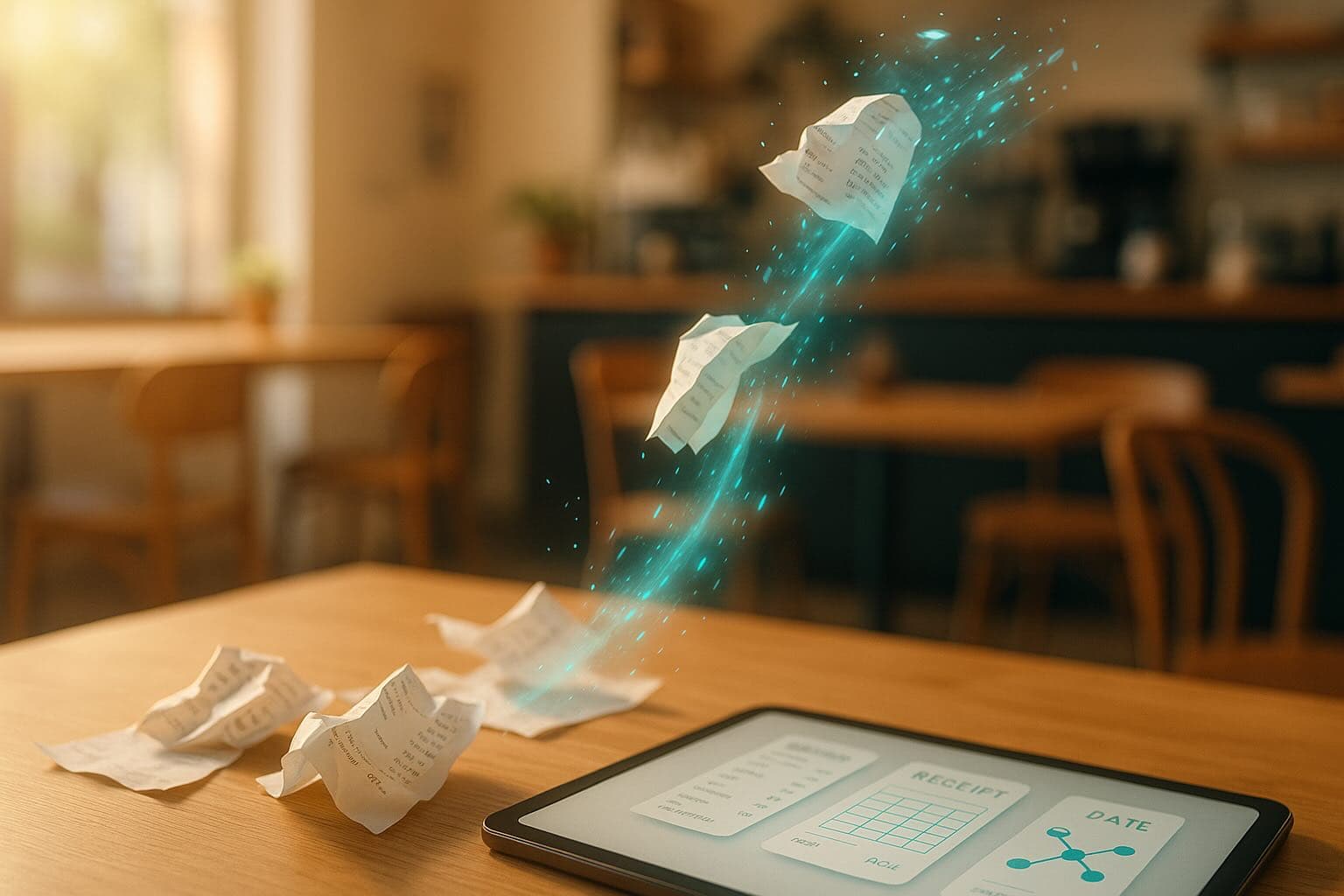Why Small Businesses Are Ditching Paper Receipts

The shift from paper to digital receipts isn't just a trend—it's a fundamental change in how businesses operate. Small businesses, in particular, are leading this transformation, and for good reason.
The Hidden Costs of Paper
Paper receipts seem innocuous, but their true cost extends far beyond the price of thermal paper. Consider:
Time Lost to Organization: The average small business owner spends 120 hours per year organizing receipts. At $50/hour of their time, that's $6,000 in opportunity cost—money that could be spent growing the business.
Physical Storage: Filing cabinets, storage boxes, and office space dedicated to paper archives represent ongoing costs. A single 4-drawer filing cabinet costs $200-400 and takes up 9 square feet of valuable floor space.
Risk of Loss: Paper fades, gets damaged by water or heat, and can be permanently lost. In a recent survey, 67% of small business owners reported losing critical receipts needed for tax deductions, resulting in an average loss of $1,200 in unclaimed deductions per year.
Environmental Impact: U.S. businesses generate over 250 million gallons of paper receipt waste annually. For eco-conscious businesses and their customers, this matters.
The Digital Advantage
Digital receipt management offers immediate, tangible benefits:
1. Instant Accessibility
Need a receipt from six months ago? With digital storage, it's a 10-second search away. Compare that to digging through filing cabinets or (worse) admitting the receipt is gone forever.
2. Automatic Backup
Cloud storage means your receipts survive floods, fires, and coffee spills. They're backed up automatically, accessible from anywhere, and never fade.
3. Searchable Archives
Looking for that office supply purchase from April? Search by merchant, amount, category, or date. The right receipt surfaces instantly.
4. Integration with Accounting
Modern digital receipt apps integrate directly with QuickBooks, Xero, YNAB, and other accounting platforms. No more manual data entry. No more transcription errors.
The Tax Advantage
The IRS accepts digital receipts, but there's a catch: you need to ensure proper documentation. Digital receipt systems automatically capture:
- Clear, legible images that won't fade
- Metadata (date, time, location)
- Transaction details (itemization, tax, totals)
- Audit trails showing when receipts were captured
This level of documentation actually provides better audit protection than paper receipts, which can fade to illegibility in as little as 2-3 years.
Real Stories from Small Business Owners
Maria's Bakery (Chicago, IL): "We used to lose 2-3 hours every Sunday sorting receipts. Now our manager takes photos right at purchase. Month-end close went from 2 days to 4 hours."
TechStart Consulting (Austin, TX): "Our scattered team was submitting paper receipts via mail, which took forever. Digital submissions are instant, and we cut our reimbursement cycle from 3 weeks to 3 days."
Green Thumb Landscaping (Portland, OR): "Our clients love that we're paperless. It's become part of our brand identity. We've won contracts partly because we demonstrate environmental responsibility."
Making the Transition
Switching to digital doesn't have to be complicated:
- Start Today: Begin capturing new receipts digitally, even if you maintain paper for now
- Set a Cutoff: Choose a date (end of quarter, end of year) to stop paper entirely
- Train Your Team: Show staff how to capture receipts on the spot
- Integrate Systems: Connect your receipt app to your accounting software
- Archive Old Paper: Scan critical historical receipts, then securely dispose of paper
The Competitive Edge
Here's what many small business owners miss: going digital isn't just about efficiency—it's about staying competitive.
Customers increasingly prefer businesses that embrace modern, sustainable practices. Employees appreciate workplaces that eliminate tedious manual processes. And accounting firms charge less for clean, organized digital records than for shoe boxes full of faded paper.
The Bottom Line
The question isn't "Should we go digital?" It's "What's the cost of waiting?"
Every month on paper is:
- 10 hours of wasted time
- $500 in opportunity cost
- Increased risk of lost deductions
- Higher accounting fees
- Environmental impact
The technology exists. It's affordable (often free for small volumes). And it works.
The real question is: what will you do with the 120 hours you get back each year?
Ready to make the switch? Start your free trial at receiptreaderai.app/signup and capture your first digital receipt in under 60 seconds.